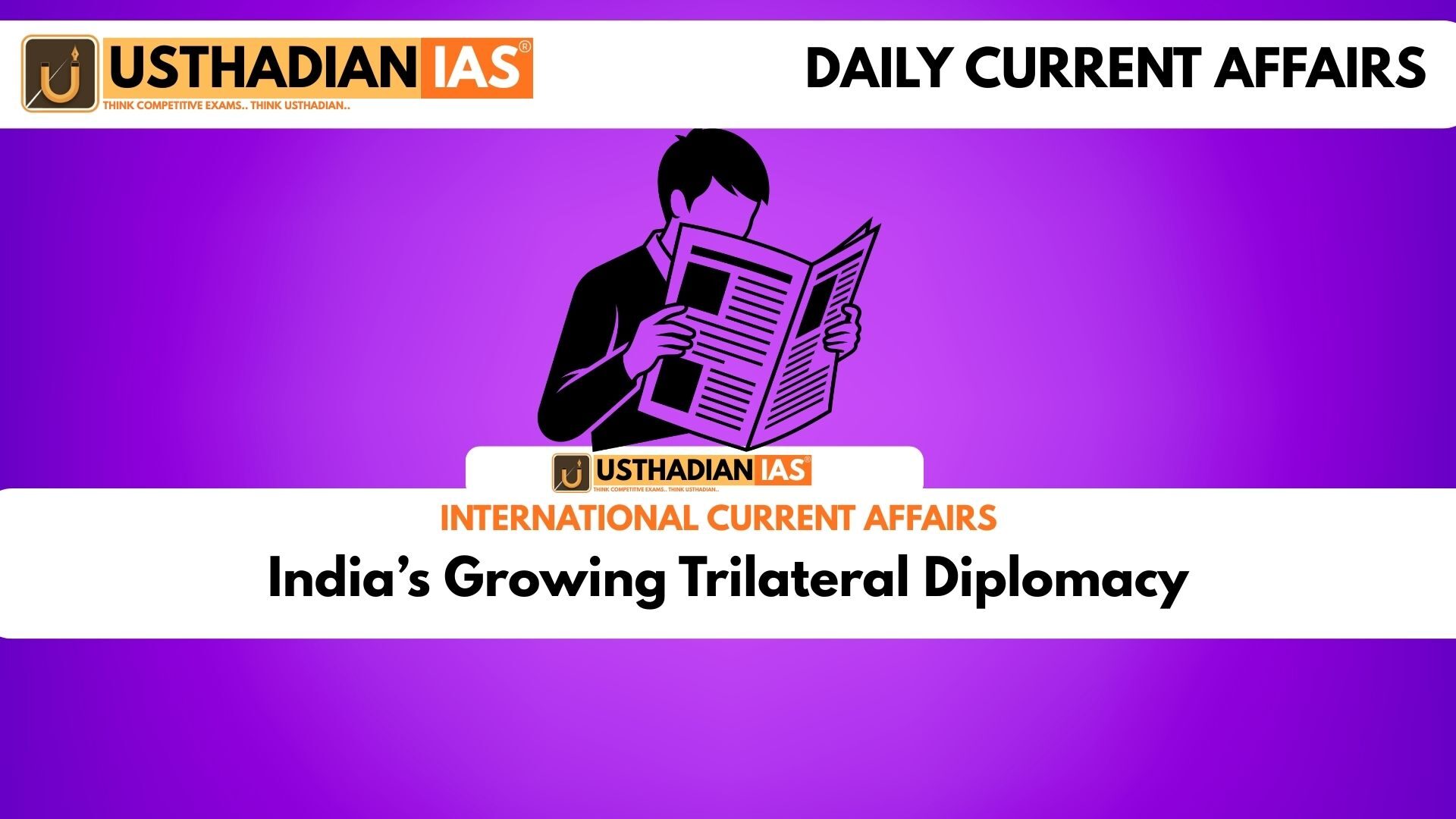India Iran Uzbekistan meeting
India’s Growing Trilateral Diplomacy: The first India-Iran-Uzbekistan trilateral meeting at the foreign ministries’ level was held in Tehran. The dialogue aimed at enhancing connectivity and trade between South Asia and Central Asia. Uzbekistan showed keen interest in accessing the Chabahar Port to expand its trade routes.
This meeting highlighted India’s increasing role in regional integration and its focus on building land-sea trade corridors. The three countries discussed ways to operationalize Chabahar as a hub for Central Asian markets.
Static GK fact: Uzbekistan is a double landlocked country, requiring access through two countries to reach the sea.
Role of Chabahar Port
The Chabahar Port in Iran is strategically located near the Gulf of Oman. It offers India a direct route to Afghanistan and Central Asia while bypassing Pakistan. Uzbekistan plans to use this port to enhance trade flows with India.
The port’s importance also lies in its connection with the International North-South Transit Corridor (INSTC). This multimodal network links India, Iran, Russia, and Europe, reducing cargo travel time significantly.
Static GK fact: India has invested in the Shahid Beheshti terminal of Chabahar Port since 2016.
India Iran Armenia trilateral
Another important engagement was the India-Iran-Armenia trilateral dialogue. The focus was on INSTC expansion and utilizing the Armenian route for regional connectivity. Armenia can act as a bridge linking Iran with the Black Sea region and Europe.
This cooperation adds a geopolitical dimension, strengthening India’s footprint in Eurasia. The discussions emphasized secure trade routes that can counter regional instability.
Static GK fact: Armenia shares borders with Turkey, Georgia, Azerbaijan, and Iran, making it a strategic transit country.
Strategic importance of trilaterals
India’s trilateral dialogues with Iran-Uzbekistan and Iran-Armenia show a shift towards multi-partner diplomacy. These partnerships provide alternatives to Chinese-dominated projects such as the Belt and Road Initiative.
For Central Asian countries like Uzbekistan, India’s support through Chabahar and INSTC offers a reliable and cost-effective option. For Iran, these trilaterals strengthen its role as a transit hub, despite international sanctions.
Static GK Tip: The INSTC was formally launched in 2000 with 13 member countries, including India, Iran, and Russia.
Future outlook
India’s trilateral diplomacy aligns with its goal of becoming a connectivity power in Eurasia. Greater use of Chabahar Port and new corridors like the Armenia route can deepen India’s trade links with Central Asia and Europe.
The success of these initiatives will depend on political stability, infrastructure development, and cooperation among regional partners. If effectively implemented, they could redefine India’s role in the global supply chain network.
Static Usthadian Current Affairs Table
India’s Growing Trilateral Diplomacy:
| Topic | Detail |
| First trilateral | India-Iran-Uzbekistan meeting in Tehran |
| Key focus | Use of Chabahar Port and INSTC connectivity |
| Uzbekistan interest | Access to Indian markets via Chabahar Port |
| India-Iran-Armenia trilateral | Focus on INSTC and Armenia corridor |
| Strategic ports | Chabahar as hub for Central Asia and Eurasia |
| INSTC | Multimodal route linking India-Iran-Russia-Europe |
| Armenia’s role | Transit link to Black Sea region and Europe |
| Chabahar investment | India invested in Shahid Beheshti terminal |
| Central Asia importance | Provides India trade routes bypassing Pakistan |
| Launch year of INSTC | Formally launched in 2000 with 13 members |








